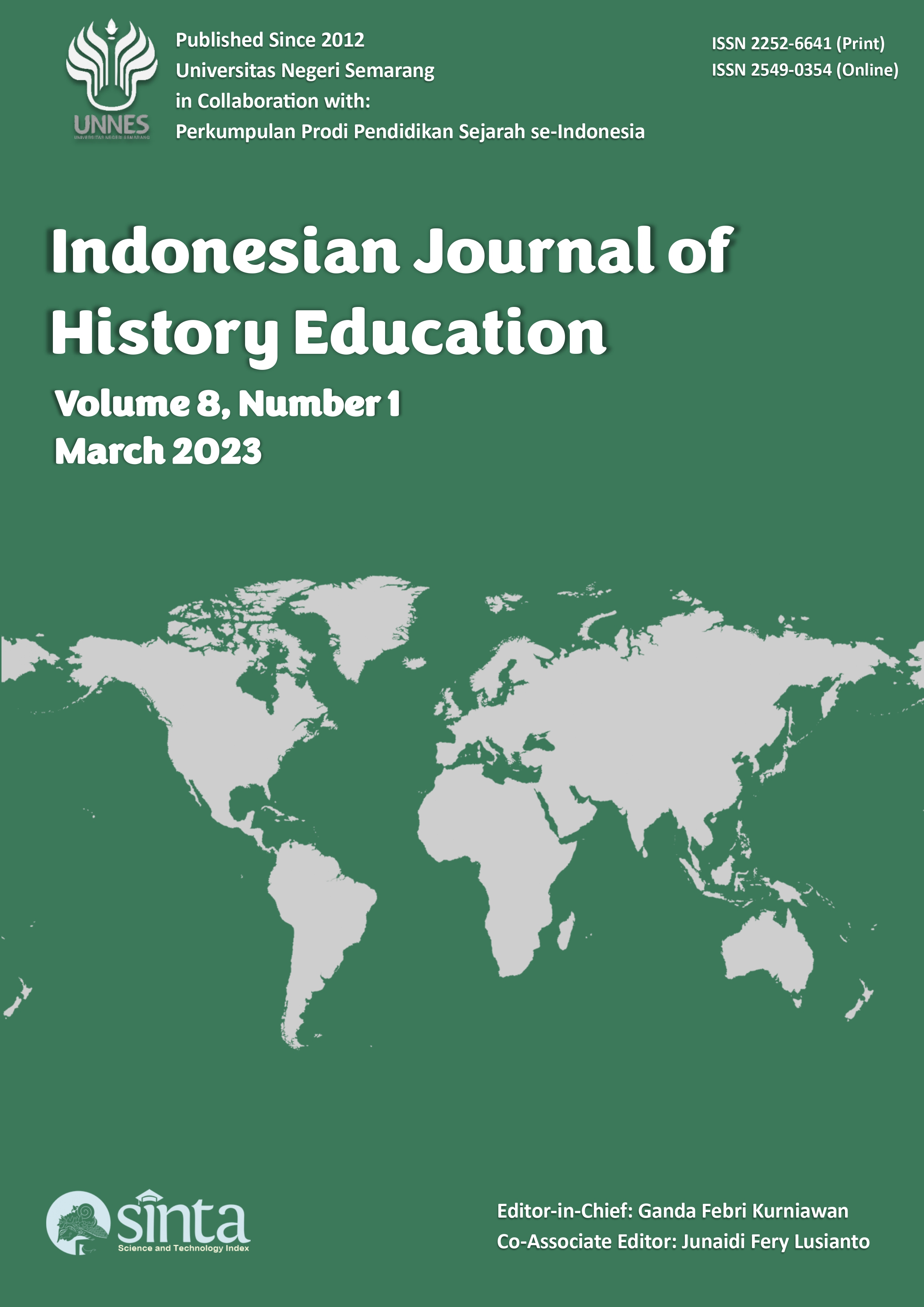The Impact of Colonial Thinking Legacy on the Production of Knowledge about the Fine Arts in Southeast Asia
Abstract
The experience of art history in Southeast Asia is an unforgettable part of society. Through art before and after thought or art has existed. The arrival of foreigners to Southeast Asia enriched new philosophies for every place that had been influenced by colonial thought. Through the new philosophy, from a perspective, thinking, and doing something, especially in art, has undergone a significant change. This change is a fundamental part but the tradition is still maintained. The impact of change through the influence of colonial thought produces new knowledge in maintaining and preserving the arts, culture, and customs that exist in every country in Southeast Asia. It can be seen that to this day it is the main place for tourists who come to Southeast Asia. Postcolonialism questions and rediscovers modes of cultural perception, and ways of seeing and being seen. In anthropology, postcolonialism studies human relations in colonial countries and subaltern societies exploited by colonial rule. Postcolonialism describes, explains, and illustrates the ideology of neocolonialism by taking the humanities, history, and political science, philosophy and sociology, anthropology, and. So post-colonialism adds or brings a new identity to each country in Southeast Asia but still maintains and preserves traditional arts and culture.
References
ASEAN. (2020). The Narrative of ASEAN Identity. Presented at the 37th ASEAN Summit on 12 November 2020. https://asean.org/storage/2020/11/9-The-Narrative-of-ASEAN-Identity_Adopted-37th-ASEAN-Summit_12Nov2020.pdf.
Awuy, T.F. (1994). Tragedy Discourse and Cultural Deconstruction. Yogyakarta: Jentera Public Discourse.
Clad, J. (2011). The borderlands of Southeast Asia: geopolitics, terrorism and globalization. Washington. DC: National Defense University Press.
Hall, D. (1988). History of Southeast Asia. Surabaya: National Effort
Harrison, C. & P. Wood. (1993). 'Introduction', in Harrison, C. & Wood, P. (ed.) Art in Theory 1900-1990 An Anthology of Changing Ideas. Cambridge: Blackwell.
Huntington, S. L. (1990). Early Buddhist art and the theory of aniconism. DG Godse's writings in Marathi.
Lee, S. (2003). A History of Far Eastern Art (5th Edition). New York: Prentice Hall.
Rohidi, T. R. (2000). Art in Cultural Approach. Bandung: STISI Press Publisher.
Rojanaphruk, P. (2013). ASEAN as a grouping is a failure, academic insists. The Nation. https://www.nationthailand.com/national/30213347 .
Scarre, C. (1991). Past Worlds. The Times Atlas of Archeology. London: Times Books Limited.
Von Schroeder, U. (1981). Indo-Tibetan Bronzes. Hong Kong: Visual Dharma Publications, Ltd.
Von Schroeder, U. (1990). Buddhist Sculptures of Sri Lanka. Hong Kong: Visual Dharma Publications, Ltd.
Von Schroeder, U. (1992). The Golden Age of Sculpture in Sri Lanka - Masterpieces of Buddhist and Hindu Bronzes from Museums in Sri Lanka. Hong Kong: Visual Dharma Publications, Ltd.
Von Schroeder, U. (2001). Buddhist Sculptures in Tibet. Hong Kong: Visual Dharma Publications, Ltd.
Copyright (c) 2023 IJHE

This work is licensed under a Creative Commons Attribution 4.0 International License.
Copyright Notice
An author who publishes in the Jurnal Indonesian Journal of History Education agrees to the following terms:
- Author retains the copyright and grants the journal the right of first publication of the work simultaneously licensed under the Creative Commons Attribution-ShareAlike 4.0 License that allows others to share the work with an acknowledgement of the work's authorship and initial publication in this journal
- Author is able to enter into separate, additional contractual arrangements for the non-exclusive distribution of the journal's published version of the work (e.g., post it to an institutional repository or publish it in a book) with the acknowledgement of its initial publication in this journal.
- Author is permitted and encouraged to post his/her work online (e.g., in institutional repositories or on their website) prior to and during the submission process, as it can lead to productive exchanges, as well as earlier and greater citation of the published work (See The Effect of Open Access).
Read more about the Creative Commons Attribution-ShareAlike 4.0 Licence here: https://creativecommons.org/licenses/by-sa/4.0/.




